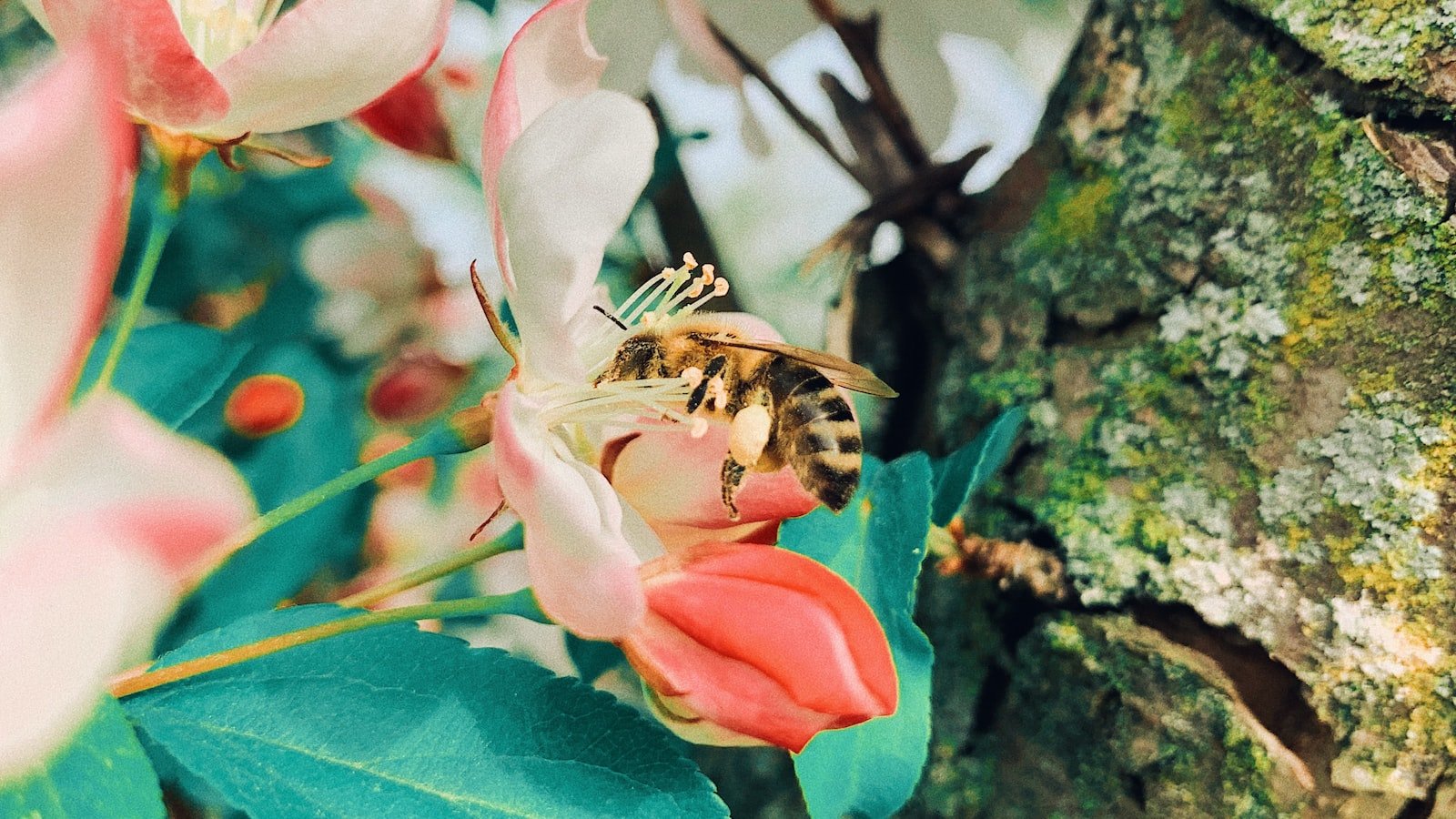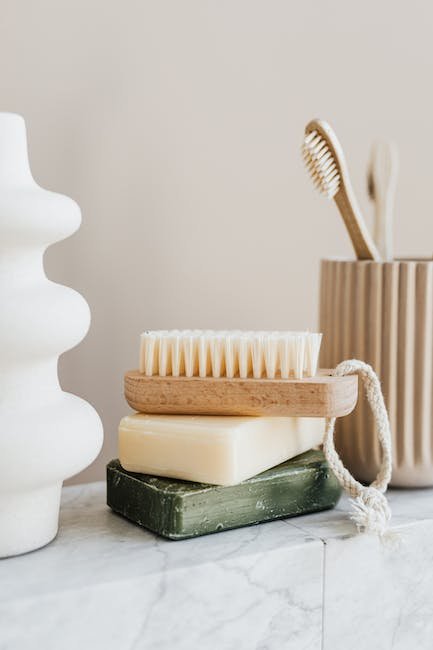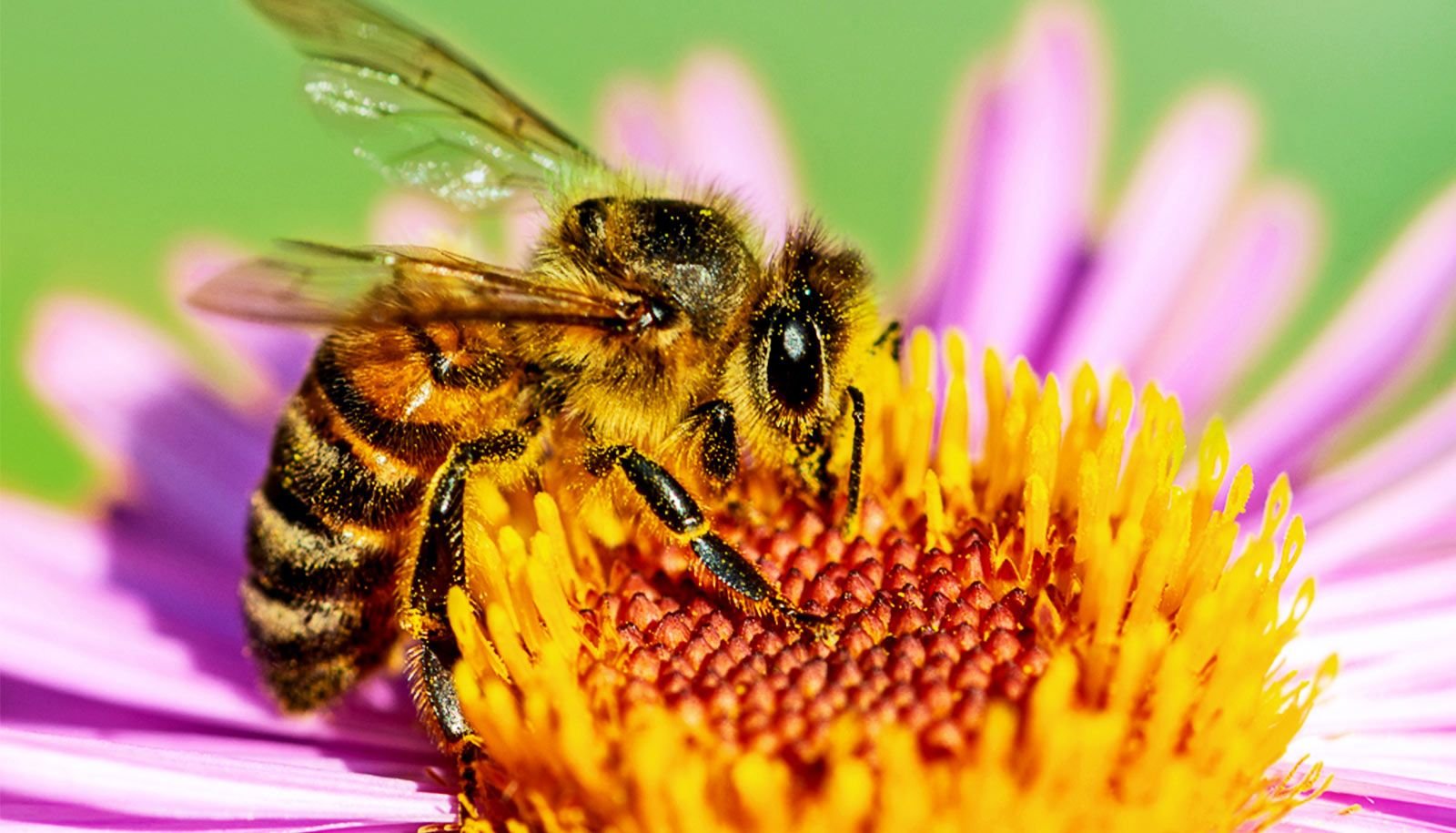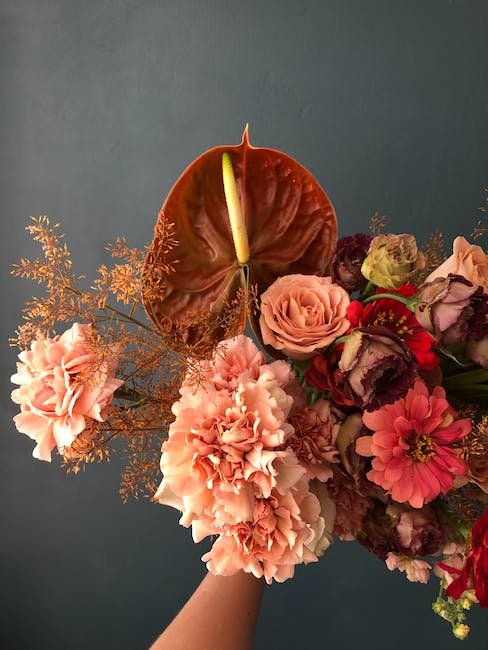Picture a vibrant garden bursting with colorful flowers, buzzing with energy, and teeming with life. Now, imagine if this idyllic oasis could play a crucial role in conserving our planet’s most industrious pollinators – bees. Welcome to the world of garden art in bee-friendly spaces. As urban landscapes continue to expand, the importance of creating green sanctuaries for our fuzzy friends becomes paramount. In this article, we will delve into the fascinating role that garden art plays in attracting and supporting bees, examining how these artistic creations can transform ordinary gardens into bee havens, while adding beauty and charm to our outdoor spaces. Get ready to explore a world where art and nature intertwine, where vibrant sculptures, mesmerizing mosaics, and ingenious designs beckon bees and inspire admiration from all who encounter them.
Table of Contents
- Creating a Haven for Bees through Garden Art
- Inspiring Pollinator-Friendly Designs in Garden Art
- The Power of Colors and Patterns in Bee-Friendly Garden Art
- Choosing Suitable Materials for Bee-Friendly Garden Art
- Embracing Creativity: DIY Garden Art Projects for Pollinators
- Q&A
- To Conclude

Creating a Haven for Bees through Garden Art
Incorporating garden art into your outdoor space not only adds beauty and creativity but can also play a vital role in supporting the declining bee population. Bees are not only important for pollination but also for maintaining ecosystem balance. By designing your garden with bee-friendly art installations, you can contribute to creating a haven for these essential creatures.
One way to attract bees is by incorporating vibrant flowers into your garden. Consider planting a mix of native wildflowers such as lavender, sunflowers, and zinnias, as well as other bee-friendly plants like salvia and borage. By using HTML formatting, you can enhance the visual appeal of this list:
- Lavender: This fragrant flower is not only a favorite of bees but also adds a calming touch to your garden.
- Sunflowers: These cheerful blooms not only brighten up your space but also provide a generous amount of pollen and nectar for bees.
- Zinnias: With their vibrant and colorful petals, zinnias not only attract bees but also act as a beacon, guiding them to your garden.
- Salvia: This perennial plant is known for its long flowering season, providing bees with a continuous source of food throughout the year.
- Borage: With its vibrant blue flowers, borage is not only visually appealing but also highly attractive to bees.
Furthermore, incorporating bee-inspired artwork can not only enhance the aesthetics of your garden but also serve as a visual reminder of the importance of these incredible insects. Consider installing a bee-themed mural, a decorative bee-shaped birdhouse, or even a whimsical bee sculpture. Remember to choose art materials that are eco-friendly and non-toxic to bees to ensure their safety.
By creating a bee haven in your garden through the integration of art and bee-friendly plants, you are not only supporting the bee population but also fostering a harmonious and inviting outdoor space. Transform your garden into a sanctuary where bees can thrive, and let the beauty of both nature and art coexist in perfect harmony.
Inspiring Pollinator-Friendly Designs in Garden Art
Discover a world where art and nature seamlessly blend to create stunning landscapes that not only captivate the eye but also provide a haven for pollinators. These enchanting gardens are a testament to the creative genius of artists who have harnessed their talent to promote biodiversity and protect our fragile ecosystem.
From whimsical sculptures that double as bird feeders to vibrant mosaic patterns that attract butterflies, there is a myriad of pollinator-friendly designs that will transform your garden into a thriving ecosystem. Here are some inspired ideas:
- Ornamental Wildflower Beds: Create a kaleidoscope of color by planting a mix of native wildflowers that bloom throughout the year. Not only will this provide a feast for bees, butterflies, and hummingbirds, but it will also add a touch of natural beauty to your outdoor space.
- Bee-friendly Pergolas: Construct a pergola adorned with climbing flowering vines such as honeysuckle or wisteria. These natural structures provide both shade and a sheltered refuge for pollinators to rest and refuel.
Through the ingenious combination of artistry and ecological awareness, these pollinator-friendly designs breathe life into gardens, fostering a harmonious relationship between humans and the delicate creatures that rely on our support. Embrace the beauty of nature and unleash your imagination to create a haven that welcomes and supports the invaluable pollinators that are essential to our existence.

The Power of Colors and Patterns in Bee-Friendly Garden Art
When it comes to creating a bee-friendly garden, it’s not just about the flowers and plants – should not be underestimated. The clever use of colors and patterns can attract bees and other pollinators, making your garden a buzzing paradise.
Colors: Bees are drawn to vibrant colors, so incorporating a variety of bright and bold hues in your garden art can help catch their attention. Think about using shades of blue, purple, and yellow, as these colors tend to attract bees the most. Combine these colors with contrasting ones to create a visually striking display that will undoubtedly entice these vital pollinators.
Patterns: Just like humans, bees are naturally drawn to patterns. By adding patterns to your garden art, you can create visual cues that guide bees towards the nectar-rich flowers. Consider incorporating stripes, dots, or even intricate designs that mimic the patterns found on flower petals. These mesmerizing patterns will act as irresistible beacons, inviting bees to explore every corner of your bee-friendly garden.
By harnessing the power of colors and patterns in your bee-friendly garden art, you not only enhance the aesthetic appeal of your outdoor space but also provide a welcoming environment for these hardworking pollinators. So, get creative and let your garden art be a vibrant masterpiece that celebrates the beauty of nature and supports the vital role bees play in our ecosystem.

Choosing Suitable Materials for Bee-Friendly Garden Art
Bee-friendly gardens are not only a beautiful addition to any outdoor space but also provide a vital refuge for our buzzing friends. When it comes to incorporating art into these gardens, it’s important to choose materials that not only enhance the visual appeal but also support the well-being of bees and other pollinators. Here are some suitable materials to consider:
- Wood: Incorporating wooden structures or sculptures into your bee-friendly garden can create a charming rustic look while being environmentally friendly. Choose untreated or naturally weathered wood to avoid potential chemical exposure to the bees.
- Glass: Adding glass elements can create stunning visual effects and provide opportunities for bees to observe flowers and plants from different angles. Consider using recycled or upcycled glass to reduce waste and ensure sustainability.
- Ceramics: Ceramic artworks can add a touch of elegance and color to your garden. Opt for locally sourced ceramics to support local artisans, and choose lead-free glazes to protect the bees from harmful chemicals.
- Metal: Metal sculptures or structures can bring an industrial or contemporary feel to your bee-friendly garden. Look for repurposed or recycled metals to reduce environmental impact, and avoid using materials with sharp edges that could potentially harm bees.
- Natural Fibers: Incorporating elements made from natural fibers such as jute or hemp can add texture and a touch of eco-friendliness to your garden art. These materials are biodegradable and do not pose a threat to bees or their habitats.
By considering these materials for your bee-friendly garden art, you can create an aesthetically pleasing environment while promoting the well-being of our important pollinators. Remember to always prioritize sustainability and choose materials that do not harm the bees or their delicate ecosystem.
Embracing Creativity: DIY Garden Art Projects for Pollinators
Turn your garden into a whimsical wonderland with these DIY garden art projects that not only add a touch of creativity to your outdoor space but also provide a welcoming habitat for our buzzing pollinator friends. These artistic endeavors can be enjoyed by both humans and the tiny creatures that rely on plants for their survival. Get your hands dirty and let your imagination soar as you embark on these delightful DIY projects.
1. Bee B&B: Create a buzzing oasis for our hardworking bees by building a cozy bee hotel. Collect small logs or bamboo sticks, bundle them together, and place them in a sturdy wooden frame. Hang the frame in your garden, positioned facing the morning sun. This stylish abode provides a safe nesting place for solitary bees, which are essential pollinators.
2. Butterfly Feeder: Invite graceful butterflies to dance in your garden by making a simple yet elegant butterfly feeder. Fill a shallow dish with fresh fruits, such as slices of overripe banana or juicy watermelon. Add a splash of color by surrounding the dish with some vibrant flowers. Butterflies will be enticed by the sweet nectar and feast upon it, all while enhancing the beauty of your garden.
3. Floral Popsicles: Give your garden a playful twist by making floral popsicles that will attract delicate hummingbirds. Fill ice cube trays with water and place a few colorful flower petals in each compartment. Once frozen, gently remove the floral popsicles and suspend them from tree branches using string or wire. As they melt, the sweet nectar from the petals will be released, providing a delightful treat for these tiny aerial acrobats.
Unleash your inner artist and watch as your garden transforms into a pollinator paradise with these creative DIY projects. Not only will you add a touch of beauty to your outdoor space, but you will also be doing your part to support the essential work of our pollinators.
Q&A
What is the role of garden art in bee-friendly spaces?
Garden art plays a crucial role in bee-friendly spaces by not only enhancing the aesthetic appeal of the garden but also providing additional benefits for bees. Bee-friendly sculptures, installations, and decorations can offer shelter, drinking water, and sources of pollen and nectar, encouraging the presence of bees and supporting their vital role as pollinators.
How can garden art provide shelter for bees?
Garden art, such as bee houses or insect hotels, can provide nooks and crannies for bees to nest and take shelter. These small structures replicate natural habitats for bees and help increase their nesting opportunities, contributing to the overall health and population of these important pollinators.
What types of garden art can provide drinking water for bees?
Artistic water features, like shallow birdbaths or small ponds with floating flowers or water plants, can serve as watering stations for bees. In addition to quenching their thirst, these features also create a visually pleasing environment that enhances the overall aesthetic appeal of a bee-friendly garden.
How can garden art help provide sources of pollen and nectar?
By incorporating flowering plants and specially designed bee-friendly art installations, gardeners can ensure a variety of pollen and nectar-rich plants are available to bees throughout the year. Sculptures or structures that incorporate flowers or utilize plants as their main element can attract bees and provide them with valuable sources of food.
Can garden art attract different species of bees?
Yes, different types of garden art and installations can attract a wide range of bee species. By carefully selecting a diverse array of plants and incorporating various artistic elements that cater to different nesting habits and foraging preferences, gardeners can create an environment that attracts and supports multiple bee species, fostering biodiversity in their bee-friendly spaces.
Does garden art have any additional benefits for bees?
Absolutely! Garden art, when combined with bee-friendly planting strategies, can create a sanctuary for bees. It can help raise awareness about the importance of pollinators, educate people about their role in ecosystem health, and inspire others to create their own bee-friendly spaces, ultimately contributing to the conservation of bees and their habitats.
To Conclude
As we bid farewell to the enchanting world of bee-friendly spaces adorned with exquisite garden art, it becomes clear that these natural oases serve as much more than just a delightful sight for our eyes. The role of garden art in these spaces transcends mere aesthetics, as it plays a remarkable part in not only nurturing bees but also preserving the delicate balance of our environment.
Through our exploration, we have witnessed the captivating dance between nature and creativity, where art acts as a bridge connecting humans to the mesmerizing world of pollinators. From vibrant sculptures that mimic blossoming flowers to intricate mosaics depicting the intricate life cycle of bees, each piece tells a unique story that resonates deep within us.
The gentle hum of diligent bees harmonizes with the harmonious melodies of wind chimes, as if nature herself creates a symphony that celebrates the collaboration between art and the tiny pollinators. In this union, we perceive the profound interconnectedness where flourishing gardens inspire artists to create, and in return, these creations inspire the gardens to thrive.
Beyond the whimsical allure, garden art serves as a vital tool in raising awareness and education. Every brushstroke and chisel mark speaks volumes, urging us to appreciate and safeguard the essential role that bees play in our ecosystem. These captivating installations not only captivate passersby but also serve as a gentle reminder of the urgent need for conservation and preservation.
As we conclude this exploration, we hope that our journey among bee-friendly spaces has inspired a newfound appreciation for the intricate dance between art and nature. May the sight of buzzing bees, vivid sculptures, and blooming blossoms serve as a constant reminder of the incredible harmony that lies within our grasp, awaiting our embrace.
With every stroke of a paintbrush, every intricately crafted sculpture, and every carefully planted flower, let us unite in the endeavor to create more bee-friendly spaces, where art flourishes alongside nature, and together, we bring about a more vibrant and sustainable world for both bees and humans alike.
As an affiliate, my content may feature links to products I personally use and recommend. By taking action, like subscribing or making a purchase, you’ll be supporting my work and fueling my taco cravings at the same time. Win-win, right?
Want to read more? Check out our Affiliate Disclosure page.